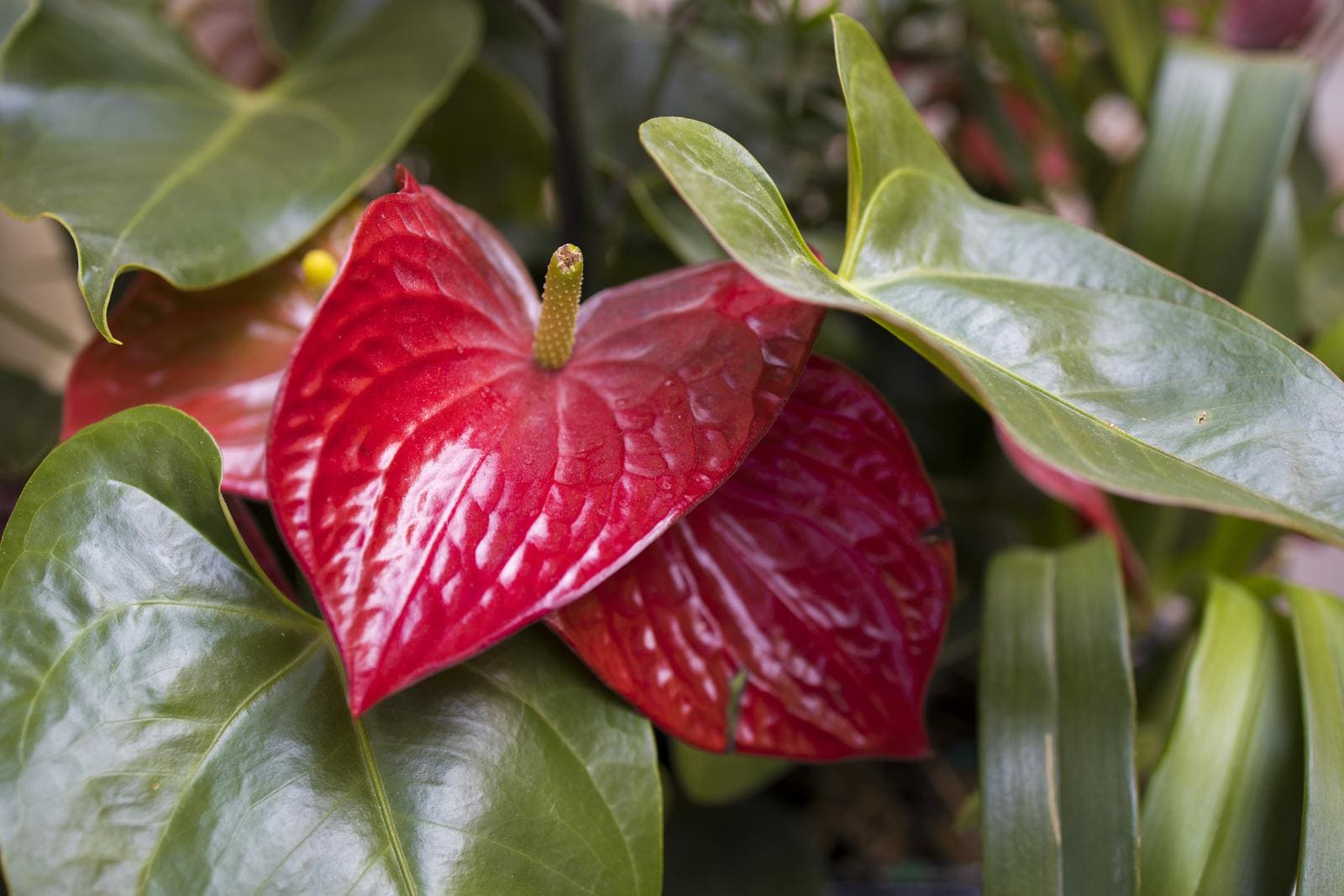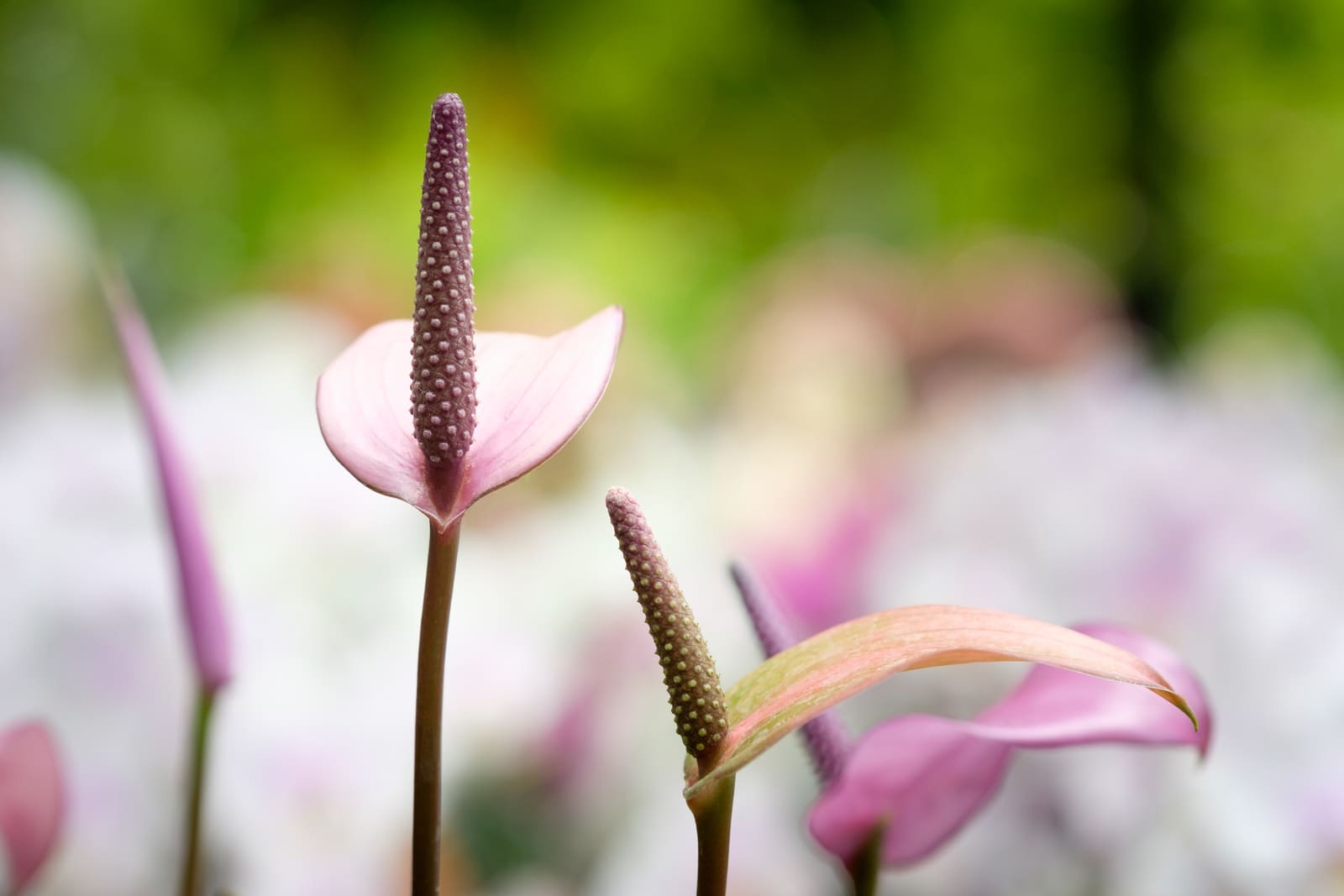Why Does My Anthurium Have Browning Leaves?
Your anthurium is starting to develop brown areas on the leaves or holes? It’s not uncommon so don’t be disheartened. Browning leaves indicate that there’s something that needs to change in terms of your plant’s care routine. Generally, it’s a pretty simple fix and it’s certainly not a grave scenario.
Just a few of the more common reasons why your anthurium’s leaves are turning brown…
1. Nutrient deficiency
Like any plant, anthuriums have a requirement for certain nutrients including nitrogen, phosphorus, and potassium – often written as N, P, K on bags of plant fertilizer. If there’s no N, P, or K, your plant will certainly not thrive and will likely eventually die. Furthermore, if there’s a lack of one nutrient or another, you’ll see brown areas developing on the leaves.
There’s an easy solution, though: Feed your anthurium with an appropriate fertilizer.
Many indoor plant enthusiasts rely on slow- or controlled-release fertilizers. However, if the leaves on your plant are already starting to brown, which they obviously are otherwise you wouldn’t be reading this article, the addition of liquid fertilizer will be more appropriate – at least until your plant shows good signs of recovery.
Pay close attention to any dilution instructions on the bottle so your anthurium is receiving the right strength for its requirements.
2. Burn caused by sunshine
For your anthurium to be at its best it will need to be located in an area of your home that is devoid of direct sunlight. If your anthurium is exposed to too much sunlight it may well suffer from sunburn.
It’s easy to figure out this is a problem since relatively quickly your plant’s leaves will turn yellow and brown.
What can you do about it? Obvious, right? Locate the plant in an area of your home that gets less direct sunlight. You can achieve the same goal with a translucent curtain.
3. Root rot or alternative fungal problems
Adding too much water to the roots of any plant will most likely lead to rotting of the roots and can also then lead to various other fungal-associated issues. This can be responsible for the browning of your anthurium’s leaves.
If you suspect your plant has been overwatered on a regular basis, check out the roots. If they appear black in color or if they are mushy, appropriate action is required.
And what might that action be?
Repot the plant. Use fresh potting medium (fresh potting soil). Use secateurs or plant scissors to remove any soft, mushy areas of the roots – be sure to clean your secateurs/scissors before use.
Then, moving forward… do not overwater.
Watering anthuriums is simple enough, though perhaps it’s a little counterintuitive. While anthuriums are tropical plants – plants that require high humidity to thrive, anthurium water requirements are, in fact, very light. Anthuriums have big, fleshy roots that rot easily in waterlogged soil, so they really only should be watered once a week or so.
4. Why Does My Anthurium Have Browning Leaves? Age
When a plant’s leaves get old they have a tendency to turn color – usually brown and/or yellow and fall off. It’s just a part of any plant’s life cycle and is perfectly natural. As such, there’s nothing that can be done about it and there’s also nothing at all to be concerned about.
While the leaves will fall from your plant ‘au natural’ when they get old, you can speed the process along since old leaves on a plant – particularly a prized houseplant – will look unsightly.
So, by all means, go ahead and remove the leaves by using clean plant scissors or small cutting shears.
Anthurium Leaves Browing – FAQs
Should I cut brown anthurium leaves off?
When the leaves or flowers on your anthurium are wilting or turning brown or yellow, cut them off with sharp, clean plant scissors or shears. This way, your plant will devote more energy to retaining healthy growth.
Why does my flamingo lily have brown spots?
Anthurium scherzerianum and Anthurium andraeanum take their common name, flamingo lily, from their brightly colored waxy flowers.
The reason for the brown spots on the leaves could be down to bacteria that infect the leaves. But it can, as has been alluded to above, be down to nutritional deficiency or possibly too much sunlight – or, indeed, simply due to the aging process of the leaves.


